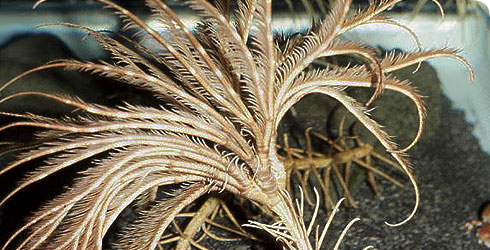Metacrinus rotundus (Japanese sea lily)
The Japanese sea lily, Metacrinus rotundus, is a bottom-dwelling marine animal found off the west coast of Japan.
Sea lilies are stalked crinoids that live attached to a surface. They filter food particles from water flowing past them using their feathery arms, which are arranged around a central mouth.
Species detail
Living stalked crinoids tend to inhabit deep water and M. rotundus can be found at depths of 210-270m. It is also occurs at depths of only 160m in Suruga Bay near Tokyo, making it the shallowest species recorded.
As a shallower living crinoid, M. rotundus is vulnerable to coastal trawling. However, while it is not a protected species, local fisherman are aware of the scientific importance of this animal.
-

Appearance and biology
Learn about the size, growth and lifecycle of Metacrinus rotundus as well as how long it typically lives. Find out how dispersal takes place.
-

Behaviour and ecology
Find out about the behavioural traits and feeding habits of this bottom-dwelling species, and learn more about its habitat and the other fauna it lives alongside.
-

References
Get reference material for Metacrinus rotundus.
Images
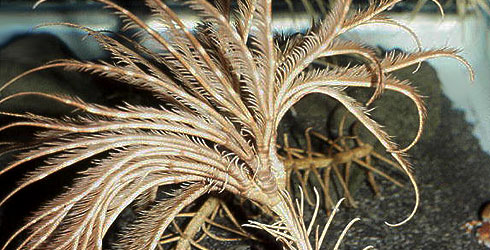
Metacrinus rotundus is a marine animal with a fan-like crown of arms supported by a tether-like stalk. It uses the arms, which are covered in rows of feather-like appendages (pinnules), to trap food such as plankton.
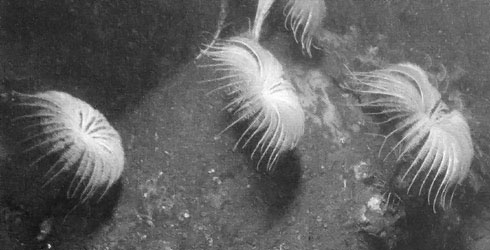
Metacrinus rotundus continues growing throughout its lifetime and is able to regrow its arms and stalk if they are damaged. The stalk can be as long as 40cm in adults.
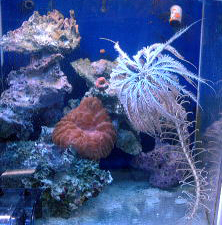
Metacrinus rotundus in an aquarium, showing the long stem and parabolic fan.
© Marine Theatre Inc.
Coastal trawling is a threat to Metacrinus rotundus as it lives at relatively shallow depths.
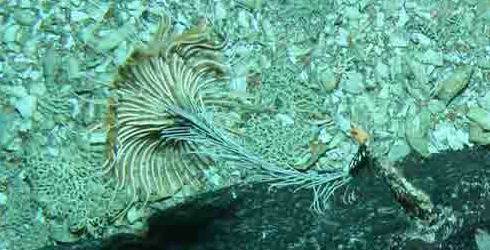
A stalked crinoid with over 50 arms, probably in the genus Metacrinus, seen by DTIS (Deep Towed Imaging System) on Seamount 4 (an underwater mountain).
© New Zealand's National Institute of Water and Atmospheric Research (TAN0803)Author
Aaron Hunter
Invertebrate Curator, Department of Zoology.
